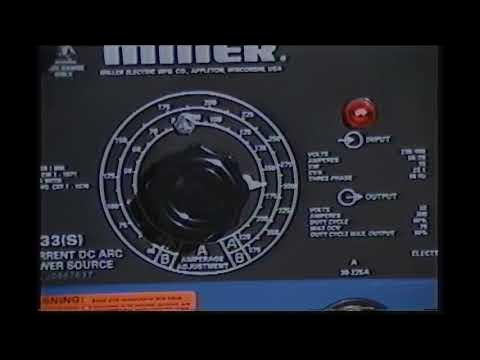short circuit test of transformer in hindi | short circuit test of transformer | practical | test
Summary
TLDRThe script discusses the process of performing a short circuit test on a transformer, focusing on the primary, winding, and high voltage binding. It explains the use of a voltmeter and wattmeter to measure the rated voltage and current, applying a reduced voltage to induce a small current for detecting short circuits. The video will guide viewers through the switch connection diagram, the calculation of copper loss, and the importance of measuring parameters like resistance and inductance. It encourages viewers to subscribe for regular updates on electrical testing techniques.
Takeaways
- ⚡ Short circuit test is performed on the primary winding and high voltage binding of the transformer to determine copper loss efficiency and transformer equivalent resistance impedance.
- 📊 In the short circuit test, voltmeter, ammeter, and wattmeter are connected to the high voltage side of the transformer.
- 🔌 A small percentage (5-10%) of the rated voltage is applied using an autotransformer during the short circuit test.
- 🔋 The secondary or low voltage side remains shorted during the short circuit test.
- 📉 The ammeter measures the current, and the wattmeter measures the copper loss during the short circuit test.
- 🧲 The magnetic flux depends on the applied voltage; reduced voltage results in less magnetic flux and, consequently, lower core losses.
- 🔍 The wattmeter indicates copper losses since the reduced magnetic flux causes minimal iron losses during the test.
- 🔗 The equivalent resistance and impedance are determined using the measured parameters from the short circuit test.
- 📐 Copper losses are directly proportional to the current, while core losses depend on the voltage and magnetic flux.
- 🔔 Viewers are encouraged to subscribe to the channel and press the bell icon for regular updates and more detailed explanations on various topics.
Q & A
What is the purpose of performing a short circuit test on a transformer?
-The purpose of performing a short circuit test on a transformer is to determine copper losses, efficiency, and the equivalent resistance and impedance of the transformer.
Which components are connected on the high voltage side during a short circuit test?
-During a short circuit test, a voltmeter, ammeter, and wattmeter are connected on the high voltage side of the transformer.
How is the voltage applied during the short circuit test?
-In the short circuit test, a voltage that is 5-10% of the rated voltage is applied using an autotransformer to the high voltage side of the transformer.
What happens to the secondary or low voltage side during the short circuit test?
-During the short circuit test, the secondary or low voltage side is short-circuited.
Why is the applied voltage in the short circuit test very low?
-The applied voltage is very low to ensure that the magnetic flux created is minimal, leading to reduced core and iron losses.
What is the role of the wattmeter in the short circuit test?
-The wattmeter measures the copper losses in the transformer during the short circuit test.
How is the rated current applied during the short circuit test?
-The rated current is applied to the circuit by adjusting the voltage from the autotransformer to ensure that the current flowing is at the rated value.
What does the wattmeter measure during the short circuit test?
-The wattmeter measures the power loss due to the copper losses in the transformer.
How is the equivalent resistance of the transformer calculated in the short circuit test?
-The equivalent resistance is calculated using the power loss measured by the wattmeter and the rated current, with the formula P = I^2 * R.
What parameters can be determined from the short circuit test?
-From the short circuit test, the copper losses, equivalent resistance, and impedance of the transformer can be determined.
Outlines

This section is available to paid users only. Please upgrade to access this part.
Upgrade NowMindmap

This section is available to paid users only. Please upgrade to access this part.
Upgrade NowKeywords

This section is available to paid users only. Please upgrade to access this part.
Upgrade NowHighlights

This section is available to paid users only. Please upgrade to access this part.
Upgrade NowTranscripts

This section is available to paid users only. Please upgrade to access this part.
Upgrade NowBrowse More Related Video

INSULATION RESISTANCE AND POLARIZATION INDEX TEST FOR TRANSFORMER BY MEGGER

Apa yang dimaksud transformator step up dan step down induksi elekromagnet kelas 12

Transformer कितने प्रकार के होते है? Types of transformer

How Transformers work explained animation

DON'T BUY this HV Generator! Build this one instead....please

LOAD TESTING WELDING POWER SOURCES
5.0 / 5 (0 votes)